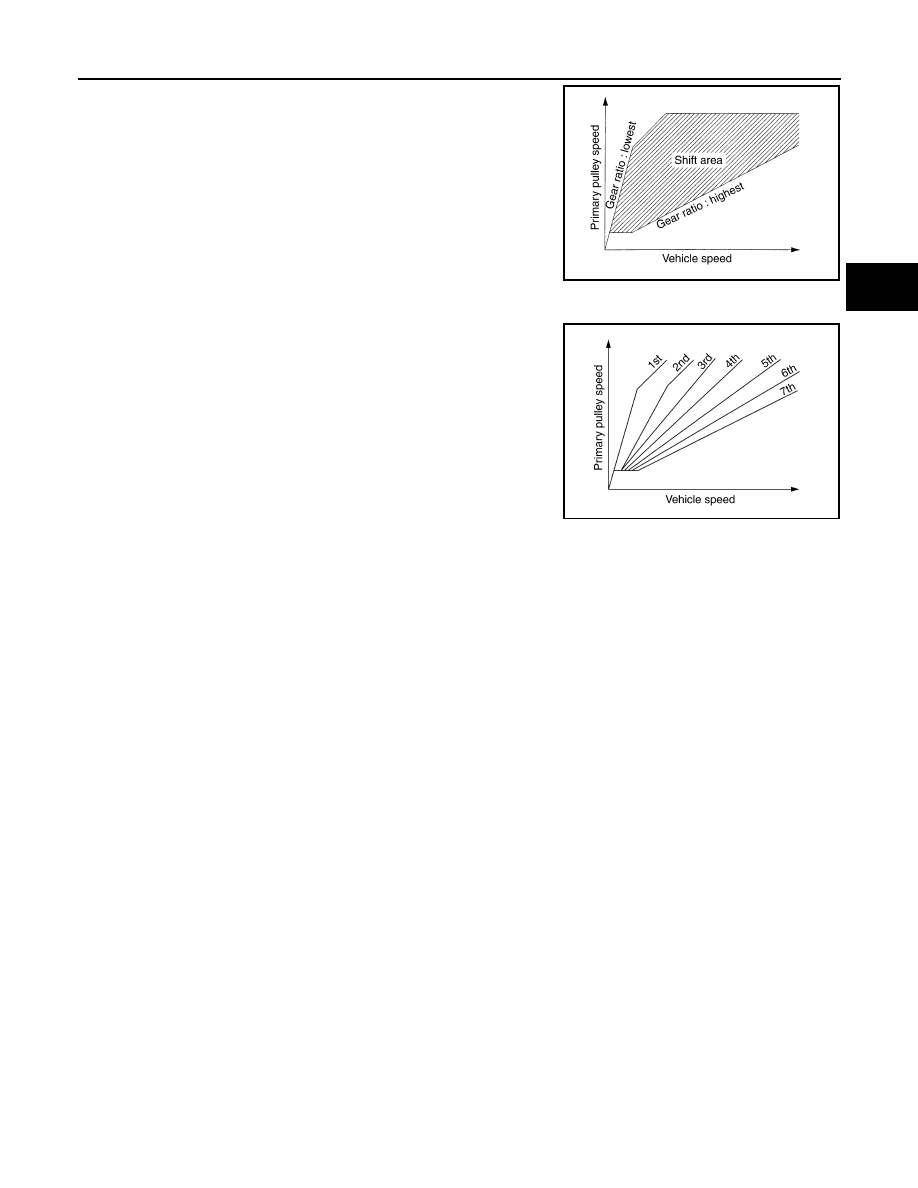Nissan Qashqai J11. Manual - part 667

SYSTEM
TM-243
< SYSTEM DESCRIPTION >
[CVT: RE0F10D]
C
E
F
G
H
I
J
K
L
M
A
B
TM
N
O
P
Gear shifting is performed in all shifting ranges from the lowest to
the highest gear ratio.
• M Position (Manual Mode)
When the selector lever is put in the manual shift gate side, the
fixed changing gear line is set. By moving the selector lever to +
side or - side, the manual mode switch is changed over, and shift
change like M/T becomes possible following the changing gear set
line step by step.
- Manual Mode Information
The TCM transmits the manual mode shift refusal signal to the combination meter if the TCM refuses the
transmission from the driving status of vehicle when the selector lever shifts to UP side (+ side) or DOWN
side (
−
side). The combination meter blinks shift indicator on the combination meter and sounds the buzzer to
indicate the driver that the shifting is not performed when receiving this signal. However, the TCM does not
transmit the manual mode shift refusal signal in the conditions as per the following.
• When the selector lever shifts to DOWN side (
−
side) while driving in M1.
• When the selector lever shifts to UP (+ side) side while driving in M7.
Blipping Control
Using engine torque, the blipping control enables a faster and more responsive gear shifting by compensating
inertia torque generated from the rotational change during gear shifting in real time.
Operation
• The blipping control is activated when shifting up/down in manual mode or when shifting up/down in “Ds”
position.
NOTE:
The blipping control is not activated when the vehicle is in the following conditions:
• When CAN communication is abnormal.
• During the retard inhibit signal transmission from ECM within the engine-CVT integrated control.
• Engine coolant temperature is less than 20
°
C (68
°
F).
• CVT fluid temperature is more than 120
°
C (248
°
F).
• Vehicle speed is less than 20 km/h (13 MPH).
• When ABS, TCS or VDC is active.
• During wheel spin.
• ECM selects blipping control or normal shift control according to the gear position, the selector lever posi-
tion, etc.
• The blipping control is activated when ECM judges it controllable after receiving a control permit signal from
TCM.
SCIA1953E
JSDIA4104GB